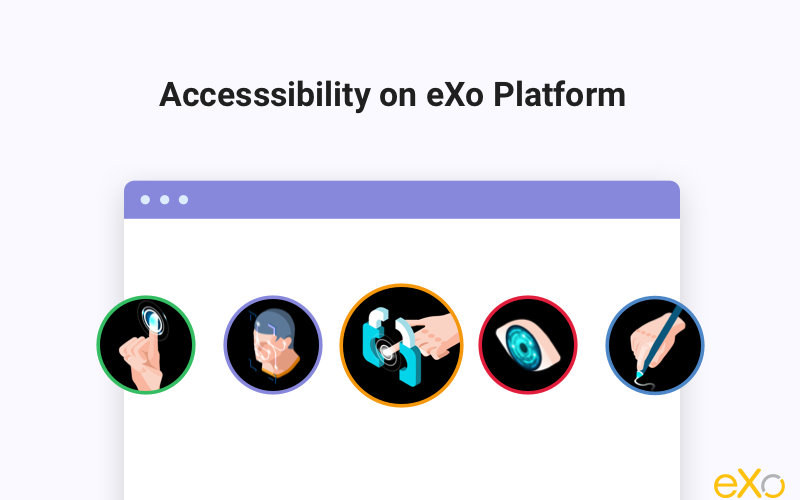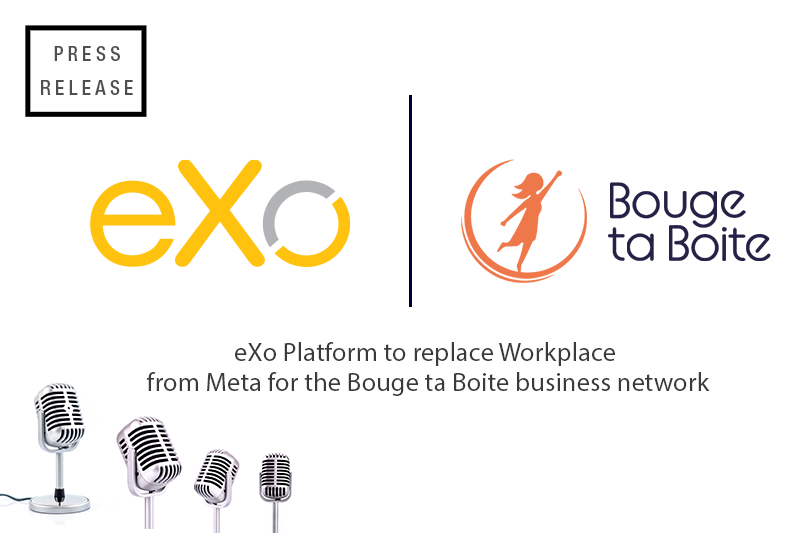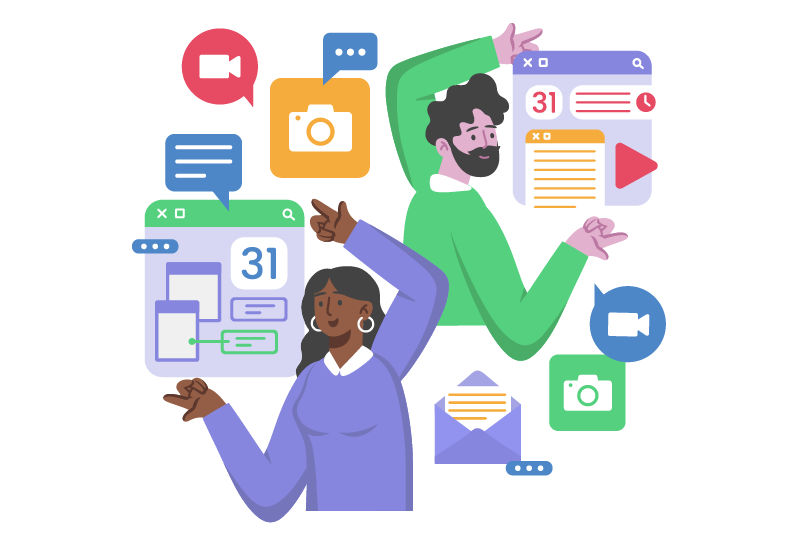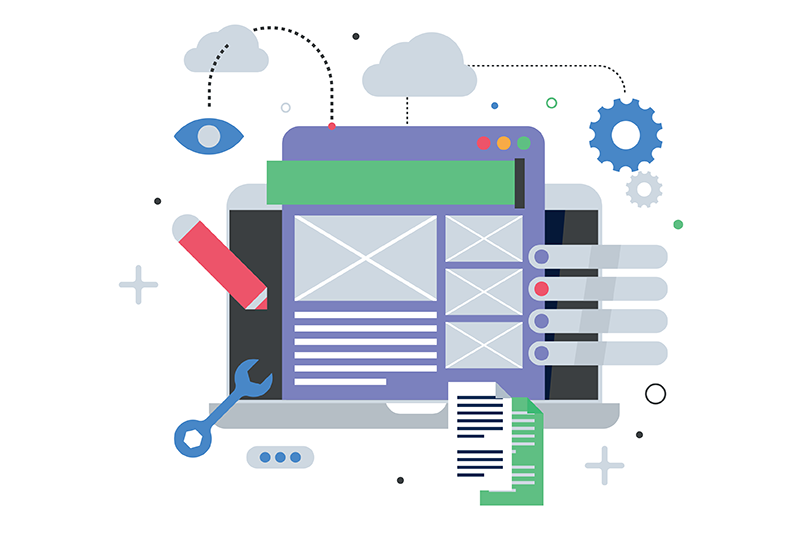- Fares Laroui
- July 28, 2021
Accessibility on eXo Platform
In today’s modern digital workplace, the ease with which users can interact with their digital environment is key to guarantee a successful digital employee experience (DEX).
Generally speaking, most businesses focus their efforts on improving both UX and UI of their solutions to help end users effectively navigate their applications, find what they are looking for and get things done.

Content
For most of us, browsing our digital workplace or any other application is easy as they are primarily designed to fit our needs and make our experience better. However, this is not always the case for over 15% of the world’s population or roughly one billion people who experience some sort of disability.
For this reason, we are committed to provide an inclusive and accessible platform for everyone, regardless of their abilities, disabilities and the severity of the latter. Additionally, we strive to support customers in reaching their accessibility targets, in particular regarding compliance with the latest accessibility standards and guidelines.
In this blog post, we are going to walkthrough our approach to software accessibility, the standards we seek to comply with and our plans for both short and long term future.
1. But first, let’s define software accessibility
In general, software or computer accessibility refers to making a system accessible for people with disabilities. As our dependence on technology grows further by the day, accessibility has become an absolute must for businesses in order to provide all users with a similar user experience and make the use of both hardware and software less challenging.
There are a variety of international standards and guidelines (such as WCAG, ATAG, RGAA, …) that define a list of criteria to assess the conformity of web content and pages. Being partially or fully compliant with some or all of these standards guarantees better accessibility, usability and an enhanced user experience for all end users.
2. Our approach to software accessibility
As a web-centric solution, we seek to comply with the Web Content Accessibility Guidelines (WCAG) , which represents a set of guidelines and recommendations to help make web content accessible for people with disabilities.
Additionally, we look to make our digital workplace compliant with Section 508 of the Rehabilitation Act, amended by the Workforce Investment Act of 1998. Section 508 requires that federal agencies develop, build and use information and communications technology such as websites, portals and digital workplace solutions that can be accessible for people with disabilities whether or not they work for the federal government.
Our initial focus has been placed on assessing overall navigation and conformity of content oriented pages and applications within eXo Platform. Here, the aim is to allow users with learning disabilities (dyslexia), visual or hearing impairments, to easily locate, access and consume various types of information within the activity stream and collaborative spaces such as news articles, wikis, chat messages and documents.
To guarantee a smooth and effective process, a team has been assigned the tasks of performing internal audits, assisting eXo clients with accessibility projects and gathering feedback from end users.
We have decided to put together a diverse and multidisciplinary team composed of software engineers, analysts, designers and testers to alter processes at all stages from product ideation, tooling and design to software development and testing.
3. What’s next?
Going forward, the objective is to periodically assess the accessibility score of eXo Platform’s main existing applications and perform the right adjustments to achieve higher scores.
In terms of product development, we are fully committed to developing a digital workplace that is accessible by design. To achieve this, different teams will be provided with a continual accessibility training to be aware of the latest trends, requirements and best practices.
Additionally, feature teams are currently working on Including people with disabilities as design personas while quality assurance teams are prepared to perform usability tests with participants who experience some sort of disabilities and impairments.
Last but not least, we plan to widen the accessibility coverage to more collaborative and interactive workflows already available in the product as well as more usage scenarios, for example content authoring thanks to ATAG guidelines.
Achieving accessibility is a continuous process that involves our internal teams, clients and community members. This is why we rely on your feedback and suggestions to help us pinpoint accessibility limitations and work on potential improvements. For further information, don’t hesitate to consult our accessibility statement, if you encounter any issues or drawbacks, please make sure to contact us via our website or open community “eXo Tribe”.
eXo Platform 6 Free Datasheet
Download the eXo Platform 6 Datasheet and
discover all the features and benefits
discover all the features and benefits
I am a product marketing specialist at eXo. My role is to assist marketing and sales teams in their operations and present our digital workplace solution to the world. I mainly blog about the latest tech trends, digital transformation, internal communication and how to navigate through eXo Platform.
Related posts
- All
- eXo
- Digital workplace
- Open source
- Internal communication
- Collaboration
- News
- intranet
- Future of work
- workplace
- Knowledge management
- Employee engagement
- Employee experience
- Employee productivity
- onboarding
- Employee recognition
- Change management
- Cartoon
- Digital transformation
- Infographic
- Remote work
- Sneak Peek
- Solutions
- Thought leadership
- Tips & Tricks
- Tutorial
- Uncategorized
Leave a Reply
( Your e-mail address will not be published)
Connexion
0 Comments
Commentaires en ligne
Afficher tous les commentaires


